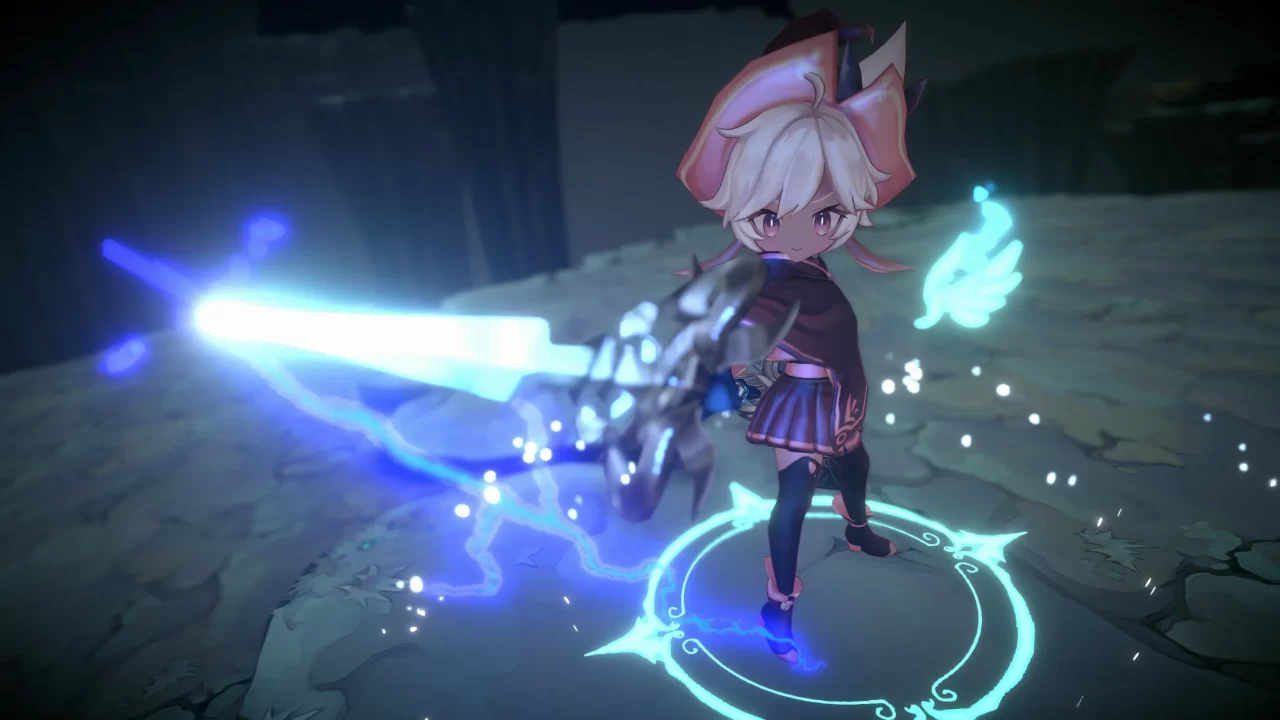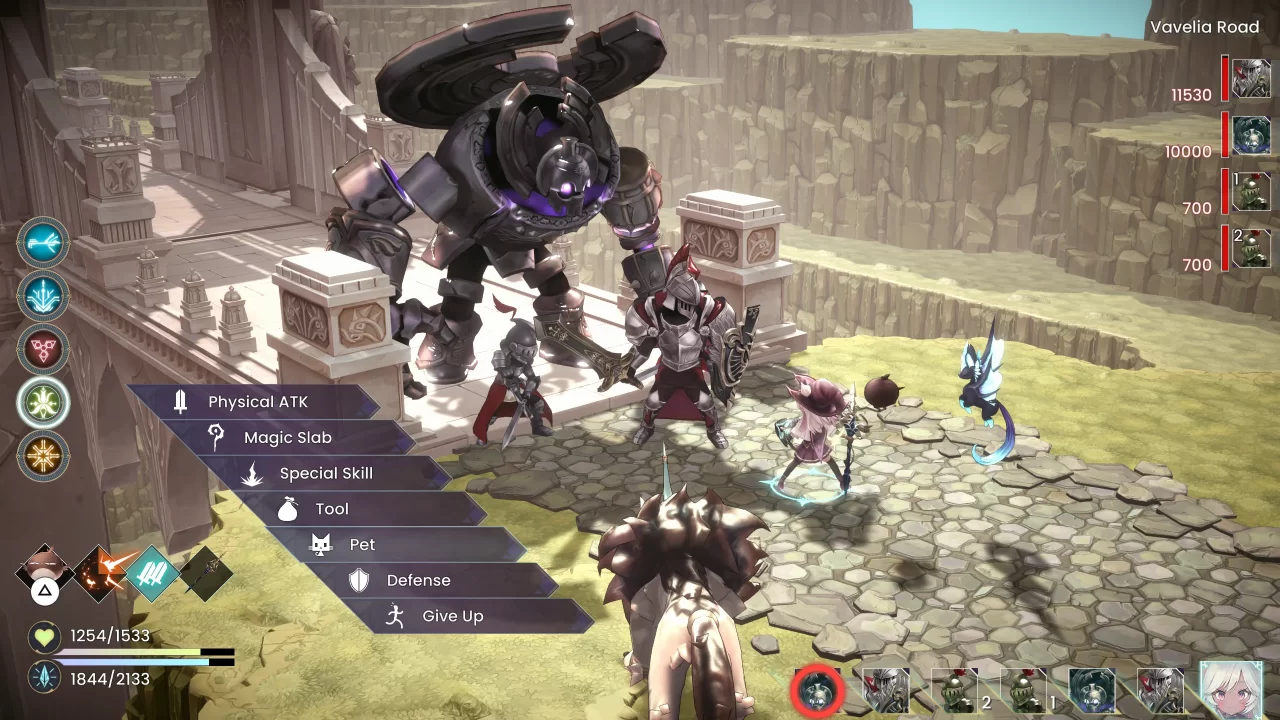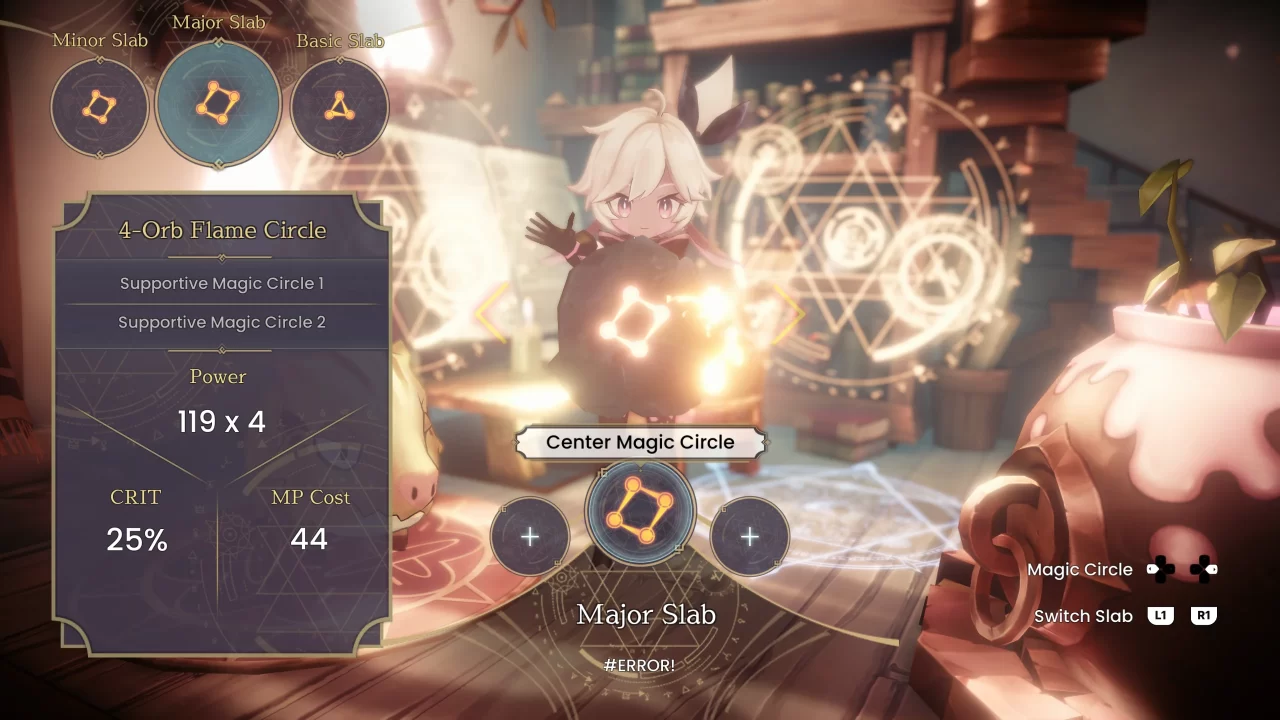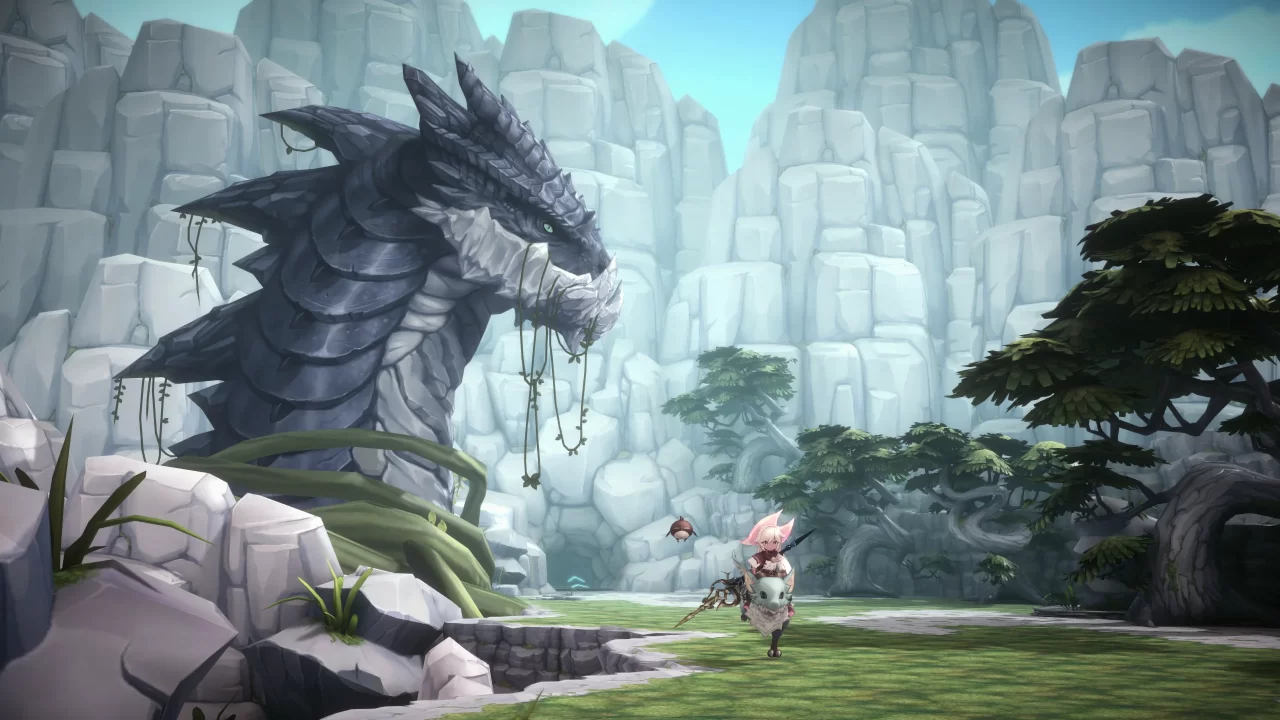Every once in a while, a fantastic game comes along that feels like it emerges from nowhere. It does everything right, it’s full of heart and charm, and the developers know exactly why the games from which they pull inspiration work. WitchSpring R is one of those games: a wondrous indie darling that serves as a dark horse for my game of the year. Yet, what is it about this charming little game that managed to capture my heart? In short, pretty much everything.
For starters, WitchSpring R is a story-focused RPG from Kiwiwalks, a three-person independent development team from South Korea. At first glance, the game appears to be similar to the Atelier games with a focus on magic and training pets rather than alchemy. However, this title is far more than meets the eye. The game manages to combine elements of Atelier and SNES RPGs while creating its own fresh and unique identity. The game is also a remake of WitchSpring, released in 2020 on mobile platforms. While the mobile game had its charms and quirks, WitchSpring R is a staggering glow-up in nearly every aspect.
The story of Witch Spring R follows a ten-year-old witch named Pieberry, appropriately named for her love of both pie and strawberries. She lives alone in a forest, tucked away from the world for as long as she can remember. All she knows is that she’s not allowed to leave, thanks to her guardian golem, Balt, who stands as her sentinel. Her guardian also protects her from the invaders of the outside world: knights of the holy church who hunt witches. A chance encounter with a strange and ugly-cute bird named Black Joe turns her world upside down and grants her a chance to explore the land beyond her borders.
Despite its cheerful, cute, and carefree presentation, WitchSpring R tells a serious story and touches upon the harsh realities of a world run by religious zealots. Long ago, man revered those with magic and treated them as gods. Over time, that reverence grew to envy. Upon discovering the source of their gods’ powers, humanity stole it and destroyed the pantheon before quickly erasing and replacing it with their teachings. Those who survived the slaughter were branded as demons, fated to be hunted down and killed, though a handful survived only to be pursued relentlessly. Pieberry serves as one of those maligned witches, yet as little more than a curious child, she knows not why men in armor seek to kill her.
The first moments of WitchSpring R introduce the player to what Pieberry does throughout the game. As the threat of knights charging into her forest increases by the day, she needs to continue training, crafting items, and learning new spells to fend off the foes. The Atelier elements arrive early on with a crafting system that allows Pieberry to create bombs, healing salves, and buffing and debuffing items. She can also craft new magic spells as she discovers new books, yet the Training system is the most interesting. The player can choose from ten different types of training, each with a unique minigame associated with it. Each one boosts a stat or a combination of stats, yet each type also contributes to overall Mental or Physical stat growth. Each category governs stats, adds new skills and benefits, and both pair nicely with the overall Battle Level system.
WitchSpring R is a game with a finite amount of experience points. Each battle can provide experience only once, ensuring the player cannot possibly grind or over-level. With the Battle Level system, more combat options become available once Pierberry reaches the next level. This may allow her to summon more pets, wear more accessories, and unlock new skills and abilities. Alongside this system is the Weapon Evolution system, which allows players to choose a path for their weapons and feed items into them to push the weapon toward certain skill trees. Each tree has unique special abilities, some of which are extremely powerful. Each weapon tree offers new abilities that change how battles unfold, leading to a lot of variety in how to approach encounters.

Battles in WitchSpring R are turn-based, with a timeline on the bottom right. The player can influence turn order with speed boosts, items, stuns, status effects, and more. Though Pieberry is technically the only playable character, she can summon pets that automatically attack (though may require manual targeting) every turn. Said pets have special moves that take several turns to charge, and many of these attacks are devastating to the enemy. To make things easier on the player, pets cannot be targeted or attacked in any way. As long as the player has enough MP and Summon Cost, pets are ready for summoning. Near the end of the game, I was fighting walls of enemies with four small pets, two large pets, or a mixture of pet types at my side.
With so many systems at play, it’s no surprise that the combat in WitchSpring R is one of the game’s strongest points. From the very first battle, mechanics begin to reveal themselves and make every fight both fun and interesting. Throughout the game, players have access to physical skills and magic spells, and more options and strategies become available via training: physical combos, magic combos, counters, guards, magical spells, and boosts. Adding new magic is also exciting, as the creativity truly shows in spell targeting. AoE circles for fire can hit multiple targets, but some have conditional bonuses such as exploding upon hitting large enemies. Lightning AoE’s may jump from target to target as a chain-lightning spell should, or they may serve as a giant line or even a spell that lands and shoots out in six directions.
One of the most exciting parts of WitchSpring R‘s battle system is how encounters play out. Every battle is a bespoke battle, hence the limit on experience points. Running along the field and running into a symbol encounter allows players to observe and study the battle beforehand while summoning a starter pet before engaging. While players can repeat battles to farm items, experience points won’t accumulate. That said, it’s far more effective to send a companion out to gather items. The battles always felt engaging, even when I was roaming from place to place to gather items or get to the next story beat. The pacing, in terms of combat to exploration, felt nearly perfect and reminiscent of Chrono Trigger.

The moment I booted up WitchSpring R, I was incredibly impressed with its style. The world is vivid and pops with color, the characters are lovingly animated and expressive, and every particle effect and explosion in battle is a treat for the eyes. The world is gorgeous and bright, yet even the dark and murky caves have a stunning touch of life to them. The lava caverns have an ominous orange glow as magma bubbles along, the piranha-laden swamps are rife with bioluminescence, and the vast open and sun-baked fields feel warm to the touch simply by looking at them. When comparing WitchSpring R to its original form, the glow-up is almost absurd. Yet, the game also rivals its contemporaries. Visually, it appears to have all the love and care of a first-party Nintendo game, yet its budget is most assuredly a tiny fraction of that.
As if inspired by Gust and the Atelier games, WitchSpring R boasts an incredibly strong soundtrack. The gentle music in the house feels soothing and welcoming, while the battle themes are quite varied and appropriate for the situation. The general light battle themes feel right out of Atelier Iris, while the fights against giant enemies or deadly foes would be right at home in games like Magna Carta: Tears of Blood or Monster Hunter. The variety of the OST is impressive, and with the wide array of songs throughout the game, each one has its moment to breathe and make its mark. Of course, every sound effect in the game has a very satisfying feel to it. The texture of every menu sound effect, explosion of fire, zap of lightning, or dashing in fields could easily serve as a strange yet somehow effective type of ASMR.
Throughout my 25 hours with WitchSpring R, I was always waiting for something to go sideways. I expected the pacing to tank, the story to fall apart, or the characters to become insufferable. In the end, each of these elements remained rock solid. Every mechanic introduced kept things fresh and exciting, the pacing was brisk and smooth, the characters remained heartfelt and endearing, and the game never overstayed its welcome. There are a few minor issues, with the most notable being the number of typos and grammatical errors in dialogue. A few misspellings of words (e.g. though instead of through) and a handful of messy sentences such as “It must have been hard made to.” serve as the game’s most noticeable blemishes.

Additionally, while the game has myriad quality-of-life options that ensure the experience is ever so smooth, there are a couple of overlooked elements or minor missteps that stick out simply due to how much Kiwiwalks does right. When feeding pets, it’s impossible to know what kind of food they want, which led me to have a pet that I couldn’t max out affinity with despite trying to feed it every single item in my inventory. Several side areas require a pet to get across the water, though I never managed to find one capable of crossing those areas. I also never found out how to awaken a giant turtle, who I assume is the pet needed for said waterways. A few options on the pet management screen would do wonders.
Minor blemishes aside, WitchSpring R is a wonderful little gem that I truly enjoyed every moment with. It’s cute and charming and I found myself laughing more times than I had with any other game in recent memory. It’s a cozy little game that ticks all the Atelier boxes yet forges its own path and identity. While the WitchSpring series has been running strong on mobile, I’m hopeful that WitchSpring R does well enough to warrant a sequel. It feels like a Gust game with the level of polish one would expect from a first-party Nintendo game. I don’t know how they pulled it off, but I am thoroughly impressed with Kiwiwalks and eagerly await their next work.




